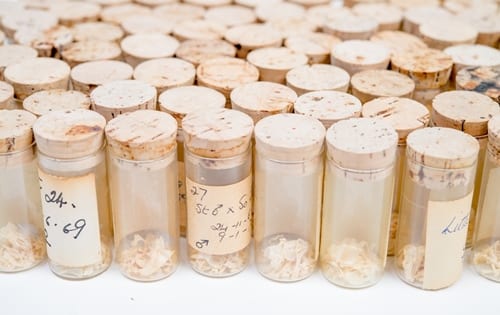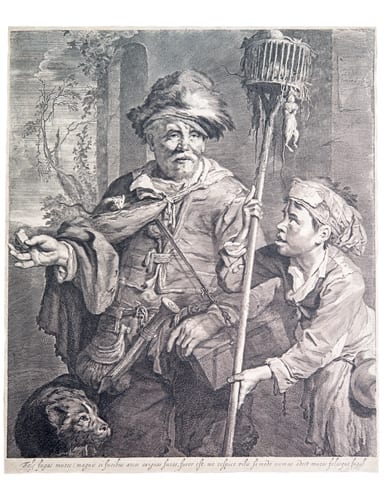The Museum of Ordinary Animals opens at the Grant Museum
By Jack Ashby, on 21 September 2017
Throughout my career in museum zoology I have detected (and contributed to) a certain snobbery when it comes to some species of animal. It seems that as far as museum displays are concerned, not all animal specimens were created equally. Our new exhibition – opening today – seeks to address this.
The Museum of Ordinary Animals tells the story of the boring beasts that have changed the world: the mundane creatures in our daily lives, including dogs, pigeons, cats, cows, chickens and mice. These animals are rarely represented in natural history museum displays. They are not special enough. Do we even need to go to a museum to see animals that we can find on our plates, on our laps and on our streets? People would rather see dinosaurs, dodos and giant whales.

Domestic dog skulls. LDUCZ-Z1046 and LDUCZ-Z1338b
Humans’ first domestication was that of dogs from wolves. Today humans have forced the descendants of wolves to become the most anatomically variable of all species.
Nevertheless, this exhibition puts these everyday species front and centre. It investigates some of the profound impacts they have had on humanity and the natural world, how they were created, and the extraordinary things we have learned from them.
The Museum of Ordinary Animals begins by asking where Ordinary Animals came from and then explores the themes of Ordinary Animals in culture, in science and in the environment. Arguably more than any “more interesting” animals, Ordinary Animals have had enormous importance in human diet, society, knowledge and civilisation. We would not be the same without them. They have played an extraordinary role in religion, scientific discovery and art, not to mention the impact they are now having on wild species and wild places.

At the centre of the exhibition is a wall tiled with around 4,000 house mouse skeletons in individual vials. They were collected from islands all around the world in the 1960s and 1970s to investigate aspects of evolution and ecology on island species.
With objects from the world of archaeology, art, zoology and the history of science, the exhibition features stories from cutting-edge research taking place here at UCL in order to investigate these themes. Exhibits include a wall of 4,000 mice skeletons hand-collected from islands across the world; a brand new (ethically sourced) taxidermy chicken; famous animal-based artworks from UCL Art Museum’s collection; and Egyptian cat mummies and what may be the world’s oldest veterinary text, on loan from The Petrie Museum of Egyptian Archaeology.

Egyptian cat mummies (c2700-1600 years old).
Cats were farmed in Ancient Egypt in their tens of thousands, specifically to be killed and mummified as religious offerings. (Petrie Museum of Egyptian Archaeology UC45975 and UC45976)
Evolution has produced some extraordinary species and mind-blowing diversity, and it is these exotic and glamorous animals that we tend to see in most natural history museums. However the more ordinary species – which are often the product of human intervention as much as evolution – also have incredible stories to tell.
Ordinary Animals are everywhere, and the ways they interact with our lives are endless and varied. We have invited them into our homes as pets; their role in our diets has changed us biologically; they are critical to modern medicine and they hold huge symbolic value in many cultures. This exhibition aims to shed light on the ways that these familiar creatures have changed both the human and natural worlds.

The Rat-Catcher, c.1654/55, Cornelis de Visscher (1629-1658)
Ordinary Animals have had profound impacts on both human and natural environments. Pests are an inevitable consequence of humanity. (UCL Art Museum 2496)
The natural history of these species is not the same as the rest of the animal kingdom’s. Before humans, there were no Ordinary Animals. We created them – either physically, through the process of domestication; or conceptually, through the ways we consider common wild species. The Museum of Ordinary Animals gives these commonplace creatures a chance to tell their stories.
The Museum of Ordinary Animals runs from 21st September to 22nd December. A number of events accompany the exhibition: through discussions, a late opening, a comedy night and offsite events discover how boring beasts shape our relationship with the natural world. Full details are on the exhibition’s website.
The Grant Museum of Zoology is open from 1–5pm Monday to Saturday. Admission is free and there is no need to book.
Jack Ashby is Manager of the Grant Museum of Zoology, and curated The Museum of Ordinary Animals.
 Close
Close

